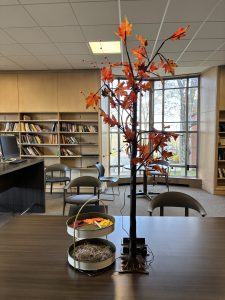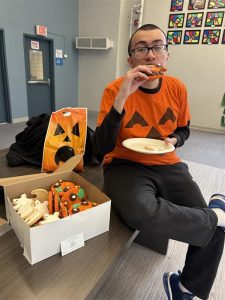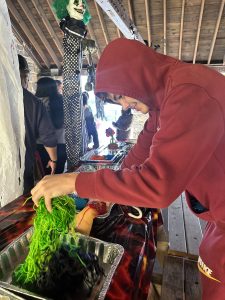Shrub Oak students participated in a series of educational trips to the American Museum of Natural History in Manhattan, enjoying an immersive and enriching experience that extended their classroom learning. Students and staff took the train into the city. The train ride itself became a part of the adventure, filled with music, conversation, and excitement about the day ahead.
Once at the museum, students began their tour in the North American mammals exhibit. As they explored the carefully preserved dioramas, they identified and discussed the many adaptations each species had made to survive in different climates and ecosystems. These observations connected directly to previous lessons in the classroom, bringing abstract ideas to life in a visually dynamic and engaging way.
The primary focus of the trip, however, was the Hall of Human Origins. This exhibit complemented earlier anthropological studies, and students eagerly examined the displays tracing humanity’s development from our ape ancestors to modern humans. The realistic models and fossil casts sparked meaningful discussion about physical and cognitive evolution, tool use, and the complexity of our shared past.
From there, students continued through the museum, visiting the Hall of Meteorites. Here, they examined fragments of asteroids, moon rocks, Mars samples, and meteorites—including a slice of the famous Peekskill meteorite that fell in New York in 1996. The opportunity to see these specimens in person deepened students’ understanding of Earth’s place in the solar system and sparked curiosity about planetary science.
The Hall of Gems was another highlight. As students walked through the dazzling displays, they recalled earlier geology lessons and identified minerals, including familiar rocks like Manhattan schist. The combination of academic knowledge and hands-on exploration helped reinforce their understanding of geology in a meaningful, tactile way.
In the final part of the visit, students encountered fossilized teeth from prehistoric creatures, large Megalodon replicas, and the most complete Stegosaurus fossil in the museum, affectionately named “Apex.” Each exhibit offered new opportunities to ask questions, make connections, and build on existing knowledge. The museum’s wide-ranging collections supported students’ interests in paleontology, anthropology, and the natural sciences.
Lunch each day varied slightly. On the first day, students ate in the city, though a long wait led to a change of plans for the next two days, when meals were enjoyed in Yonkers instead, about halfway between the museum and school. This small adjustment helped make the day more efficient while maintaining a fun and relaxed atmosphere. Across all three days, students demonstrated maturity and engagement—there were no behavioral incidents, and every participant remained focused, respectful, and enthusiastic throughout the experience.
The museum trips reflect our commitment to experiential learning and demonstrate the power of extending classroom instruction into the world beyond campus. Through close observation, thoughtful conversation, and real-world context, students brought their lessons to life and created lasting memories rooted in curiosity and discovery.





